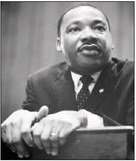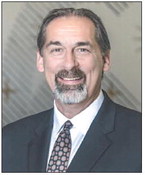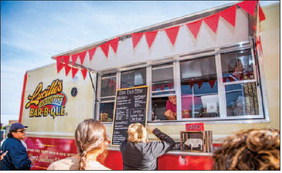Chapel A.M.E. Church near the ….


Chapel A.M.E. Church near the Edmund Pettus Bridge in Selma. The group disembarked and found a spot close to the front.
Koepke in his clerical collar stood with a sea of people, waiting.
At the time, Selma was a hotbed of racial injustice.
The city’s Black residents comprised one half of the population, but only one percent were registered to vote because of poll taxes and literacy tests. Klu Klux Klan violence and represssive local police and lawmakers were rampant.
In the middle of the cauldron, the Student Nonviolent Coordinating Committee (SNCC) and the Southern Christian Leadership Conference (SCLC) began a drive to register Black voters.
On Jan. 2, 1965, King and SCLC joined the SNCC, the Dallas County Voters League and other local African American activists in the voter registration drive.
On Feb. 19, state troopers attacked marchers during a protest in Marion. Trooper James Bonard Fowler shot and killed Jimmie Lee Jackson, a 26-year-old deacon of the St. James Baptist Church, who was trying to protect his mother from the trooper’s nightstick. (Fowler was charged with murder in 2007 and pleaded guilty to manslaughter in 2010, according to CNN.)
On March 9, about 3,200 people with peace on their minds descended on Selma. Fifty- four miles and five days later, the nonviolent protest swelled to 25,000 people, culminating on the steps of the Alabama capitol in Montgomery.
‘‘There never was a moment in American history more honorable and more inspiring than the pilgrimage of clergymen and laymen of every race and faith pouring into Selma to face danger at the side of its embattled Negroes,’’ said King, in his address there.
That’s true for Donald Koepke. His participation in the march as a young Lutheran seminarian remains a highpoint of his life: “It strongly solidified my passion for the poor, those who have been made weak by culture,” he said.
As a boy of 12, he had an avid interest in Native Americans. As he read about tribal leaders, he came away “loving the U.S. but abhoring the genocide of Native Americans and the white supremacy that fueled it: “I felt connected to the disenfranchised.”
That early perspective gave rise to his passion for the civil rights movement.
“I detested that white Americans felt they were better than Blacks,” he said.
On that day in March, all these core values coalesced in the truth of King’s words.
Koepke stood with his fellow travelers just 50 feet from the podium where King would speak. All around, people were singing freedom songs, ones Koepke learned on the 800-mile bus ride to Alabama.
“We did a lot of singing on the bus. Youth with guitars taught us all the civil rights songs; I remember them to this day,” he said.
And even in Starbucks on a Thursday morning, he sang out the words as if he were still in Selma: “Oh freedom, oh freedom, oh freedom over me, “And before I’d be a slave, I’ll be buried in my grave “And go home to my Lord and be free.”
“It goes to the heart of the African-American psyche,” he said.
Once the group hit the Mason- Dixon line that March day, the bus did not stop except to refuel: “We were in a foreign land; we were in the south,” he said.
They arrived hours early, and “the mood was cautious and exhilarated. We went to the church early and stood there for hours. Because we were in front, we had no idea how many people were behind us.
“There were speakers, civil rights songs, and then, Dr. King.
“He was a Baptist preacher, and unabashed about that,” Koepke remembered. “He believed all people were created in the image of God and steeped in the prophets who constantly railed against pride and prejudice, and not treating people properly. He spoke with passion and clarity of Christian thought.”
“Suddenly we were the people of God, leaving bondage, and we were being led out across the Red Sea, the Peddus Bridge, to the promised land.
“I could see the sweat coming off his brow and the passion of that man evoked an emotional response that was more than emotion, I would say it was from the soul.”
The group got louder and louder, shouting and clapping, and King got louder and louder.
“We were on our feet and energized, ready to go,” said Koepke.
“It was as powerful as the God moments I have had in my life. King was a pragmatist and a student of history. He was a radical, and he believed radical ideas were given birth through non-violence.
“He was calling the U.S. to live up to the ideal that all men are created equal.
“Be who you are, people . . . I still say that,” said Koepke, who has spent a lifetime realizing that ideal.
Koepke went on to graduate seminary and serve Lutheran churches in Illinois; Albuquerque, New Mexico; and in Cerritos, California.
His passion for civil rights segued into work against redlining, the illegal practice of refusing to offer credit or insurance in a particular community on a discriminatory basis; and later, South African Apartheid and the rights of the developmentally disabled.
He moved to Leisure World in 2015 and is on the board of the Senior Patriots for Peace. His new passion is to fight against ageism, the stereotying and marginalizing people who are older.
“You can see the thread from all the way back,” he mused.
At 12 years old, he came to know that a country he loved participated in Native American genocide. And at 80, he sees white entitlement still cutting a swarth of injustice across the land.
But he stood firm, once side by side with King, and now, with others of the same mind.
“I am a patriot for wholeness and justice,” he said. “Peace comes as we not only struggle to understand each other, but respect each other. After 450 of slavery, cultural norms were formed onto the psyche of America so deeply that they can not be erased by a mere 150 years of ‘emancipation.’ More is yet to be done. Martin Luther’s dream is being fulfilled, but it has yet to be reality.”
After King’s speech that March day, it was time to march. People walked eight abreast across the Edmund Winston Pettus Bridge, named for a one-time Confederate brigadier general who was also a U.S. senator from Alabama and the Grand Dragon of the Alabama Ku Klux Klan.
No matter its namesake, on that day, it was a bridge leading to the promised land.




